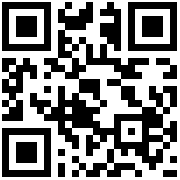Pliers can be divided into: torsion type; shear type; torsion shear type. According to the type, it can be divided into: hydraulic pliers; crimping pliers; hydraulic wire pliers; wire stripping pliers; rechargeable hydraulic cable pliers. According to the shape, it can be divided into: pointed mouth; flat mouth; round mouth; curved mouth; oblique mouth; needle mouth; top cutting; wire cutters; flower gill pliers, etc. According to the use, it can be divided into: DIY, industrial pliers, special pliers, etc. According to the structure, it is divided into two types: piercing gills and stacking gills. Usually the specifications are: 4.5" (mini pliers), 5", 6", 7", 8", 9.5" and so on.
Die Hauptkategorien sind wie folgt:
1. Drahtschneider
Ein Drahtschneider ist ein Klemm- und Schneidwerkzeug, dessen Form in Abbildung 1 rechts dargestellt ist.
The wire pliers are composed of a pliers head and a pliers handle, and the pliers head includes a jaw, a toothed edge, a knife edge, and a guillotine opening. The functions of each part of the pliers are: ① the tooth opening can be used to tighten or loosen the nut; ② the knife edge can be used to cut the rubber or plastic insulating layer of the flexible wire, and can also be used to cut the wire and iron wire; ③ the guillotine can be used to Cut off hard metal wires such as wires and steel wires; ④ The insulating plastic tube of the pliers can withstand a voltage of more than 500V, and with it, the wires can be cut with electricity. During use, do not throw it away. So as not to damage the insulating plastic pipe. The wire cutters commonly used by electricians have various specifications such as 150mm, 175mm, 200mm and 250mm.
2. Spitzzange
Needle-nose pliers, also known as trimmers, are mainly used for cutting single-strand and multi-strand wires with thin wire diameters, as well as bending single-strand wire joints, stripping plastic insulation, etc. It is also an electrician (especially an internal electrician) One of the commonly used tools. It is composed of a pointed tip, a knife edge and a pliers handle. The handle of the electrician's needle-nose pliers is covered with an insulating sleeve with a rated voltage of 500V. Needle-nose pliers have a sharper head, so it is necessary to use needle-nose pliers for operations in small spaces. The operation method of using needle-nose pliers to bend the wire connector is to fold the end of the wire to the left, and then bend it to the right in a clockwise direction against the screw.
3. Abisolierzangen
Die Abisolierzange ist eines der Werkzeuge, die üblicherweise von Elektrikern, Motorreparateuren und Instrumentierungselektrikern verwendet werden. Sein Aussehen ist in Abbildung 2 dargestellt. Es besteht aus einer Messerschneide, einem Crimpanschluss und einem Zangengriff. Der Griff der Abisolierzange ist mit einer Isolierhülle mit einer Nennbetriebsspannung von 500 V überzogen.
Die Abisolierzange eignet sich zum Abisolieren von kunststoff- und gummiisolierten Drähten und Kabelkerndrähten.
4. Rohrzange
Zur Befestigung oder Demontage von diversen Rohren, Rohrzubehör oder Rundteilen. Gängige Werkzeuge für die Installation und Reparatur von Rohrleitungen. Seine Einlagen können durch Temperguss hergestellt werden. Eine weitere Aluminiumlegierung, die sich durch geringes Gewicht auszeichnet, einfach zu handhaben und nicht leicht zu rosten ist.
5. Offset-Zange
Offset pliers are sometimes also called diagonal pliers. When cutting the wires, especially when cutting off the excess wire ends after the wires are wound on the solder joints and the long leads after the plug-ins are placed on the printed circuit board, it is best to use the tool with offset pliers. Offset pliers are also often used to cut insulating sleeves, nylon cable ties, etc. instead of general scissors. Offset pliers with a length of 160mm and a plastic insulating handle are most commonly used.
Tools der Marken TSTOP und SOM mit Marktnutzern in mehr als 120 Ländern und Regionen auf der ganzen Welt, das jährliche Exportvolumen beträgt 200 Millionen US-Dollar.
QR-Code
